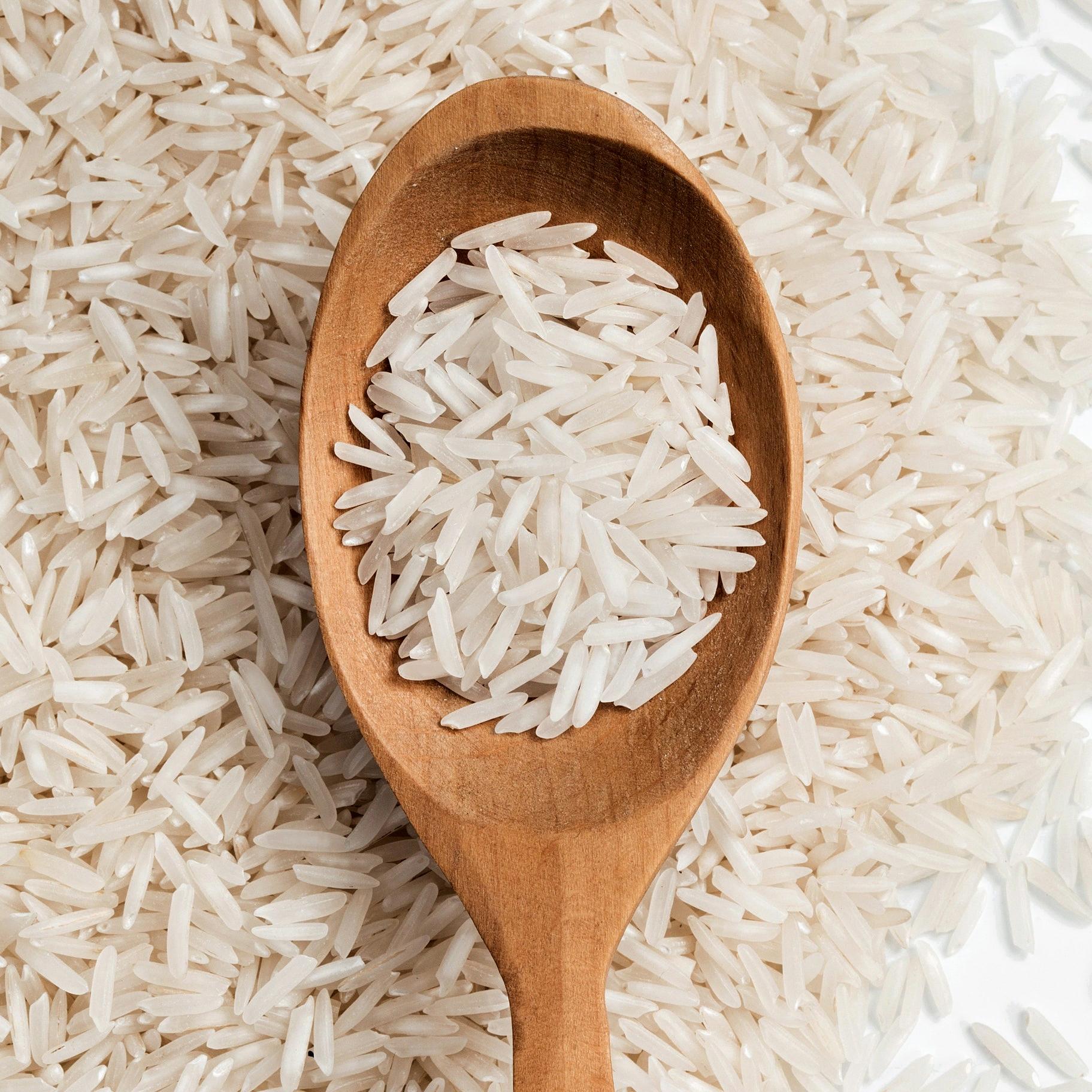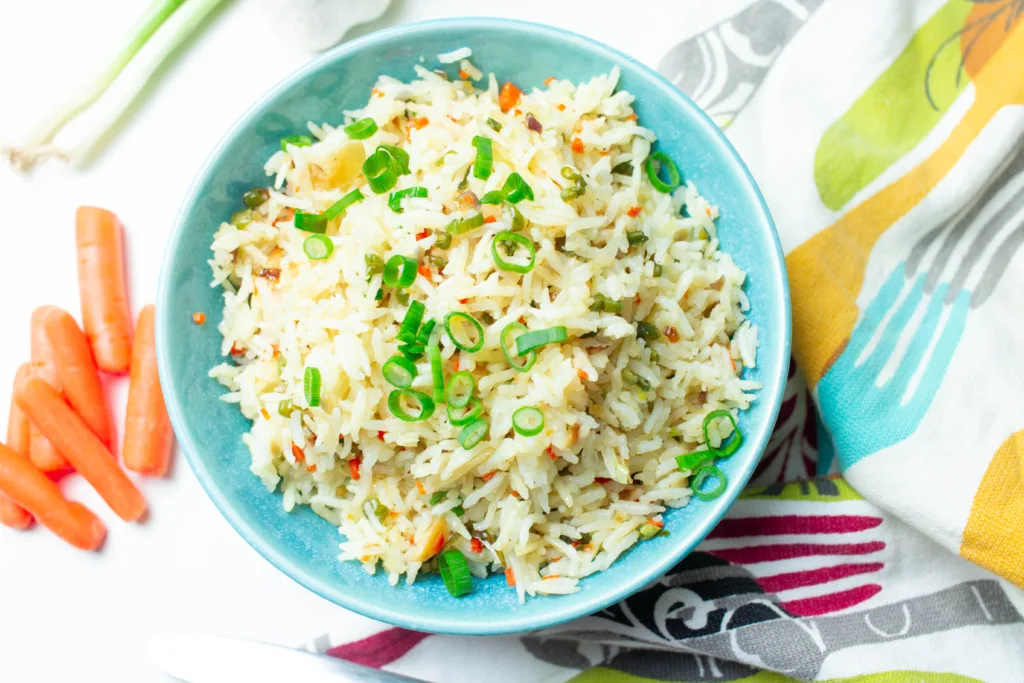Rice is a staple food in many cultures around the world. It is a versatile and affordable grain that can be prepared in countless ways. However, there is a common belief that rice can make you fat. But is it true? In this blog post, we will explore the relationship between rice and weight gain.
Firstly, it is important to understand that weight gain occurs when you consume more calories than you burn. Rice, by itself, is not a high-calorie food. One cup of cooked white rice cotains approximately 200 calories, while one cup of cooked brown rice contains around 215 calories. Therefore, rice does not inherently make you fat.
However, rice can contribute to weight gain if consumed in excess. Eating large portions of rice regularly can lead to a calorie surplus, which can cause weight gain. Additionally, the way you prepare your rice can also impact its impact on your weight. Fried rice or rice cooked with butter or oil can significantly increase its calorie content.
Moreover, white rice has a high glycemic index (GI) score, which means it can cause a rapid spike in blood sugar levels. This can lead to an increase in insulin production, which can promote fat storage. On the other hand, brown rice has a lower GI score and is a healthier option as it is more slowly absorbed by the body.
However, it is worth noting that rice can also be a part of a healthy and balanced diet. Brown rice, in particular, is a nutrient-dense food that is rich in fiber and essential vitamins and minerals. It can help promote feelings of fullness and aid in weight loss.
To incorporate rice into your diet in a healthy way, here are some tips to consider:
1. Watch your portion sizes. Stick to one cup of cooked rice per meal.
2. Opt for brown rice over white rice whenever possible. Brown rice is more nutritious and has a lower GI score.
3. Add vegetables to your rice dishes to increase their nutritional value and add bulk to your meals.
4. Use low-calorie additions such as herbs, spices, and citrus juice to flavor your rice instead of butter or oil.
5. Choose healthy cooking methods such as steaming or boiling instead of frying.
Rice by itself does not make you fat. It is the excess consumption of rice and the way you prepare it that can contribute to weight gain. Incorporating rice into a balanced diet, in moderate portions and with healthy cooking methods, can be a part of a healthy and balanced lifestyle.
Does Eating Rice Lead to Belly Fat?
Rice by itself does not usually give you belly fat. Belly fat is typically caused by an excess of calories and a lack of physical activity, which leads to weight gain. In fact, white rice can be part of a healthy diet in moderation, as it is a good source of carbohydrates and provids energy. However, it is important to be mindful of portion sizes and to balance rice with other nutrient-dense foods such as vegetables, lean proteins, and healthy fats. Brown rice, which is higher in fiber and other nutrients than white rice, may even be beneficial for weight loss and reducing belly fat. the key to a healthy diet and avoiding belly fat is to maintain a balanced and varied diet, along with regular exercise.

Source: newyorker.com
The Effectiveness of Rice as a Weight Loss Tool
Rice can certainly be a helpful addition to a weight loss plan when used in the right way. Firstly, it’s important to focus on portion control because rice is high in carbohydrates and calories. A good rule of thumb is to measure out one cup of cooked rice, which is about the size of your fist, and use that as your serving size.
Secondly, opting for brown rice instead of white rice is an excellent choice for weight loss. Brown rice is a whoe grain that is high in fiber, which can help you feel full for longer periods of time and reduce overall calorie intake.
Thirdly, adding vegetables to your rice dishes can increase the nutrient density of your meals while also helping you feel full and satisfied. Some good vegetable additions include broccoli, carrots, peas, onions, and bell peppers.
Fourthly, low calorie additions like herbs, spices, and lemon juice can add flavor without adding extra calories. Seasoning your rice with herbs like basil, cilantro, or parsley can also provide a fresh and flavorful twist.
Lastly, using healthy cooking methods like steaming or boiling your rice instead of frying it can reduce the overall calorie count of your meal. incorporating rice into a balanced weight loss plan can be a great way to stay full and satisfied while still meeting your weight loss goals.
The Benefits of Eating Rice Everyday
While rice is a staple food for many cultures and can be a healthy source of carbohydrates, eating rice every day may not be the best idea. This is because rice contains arsenic, a toxic substance that can accumulate in the body over time. While the levels of arsenic in rice are not typically high enough to cuse immediate harm, consuming rice on a regular basis can lead to an increased risk of heart disease and some types of cancer. It’s important to note that the amount of arsenic in rice can vary depending on where it’s grown and how it’s processed, so it’s a good idea to choose rice that’s been tested for arsenic levels or to vary your grain intake to include other types of grains like quinoa, barley, or millet. eating rice in moderation as part of a varied diet is a good approach for maintaining good health.
How to Lose Weight by Eating the Right Foods
If you want to lose weight, the key is to consume foods that are low in calories and high in nutrients. Some of the best foods to eat for weight loss include beans, soup, dark chocolate, pureed vegetables, yogurt with berries, nuts, apples, and yogurt.
Beans are a great source of protein and are inexpensive and versatile. They can be added to salads, soups, and stews, or eaten on their own as a side dish. Soup is also a great option for weight loss, as it can help fill you up without adding too many calories.
When it comes to snacks, dark chocolate is a great choice. It is low in sugar and high in antioxidants, making it a healthier alternative to other sweets. Pureed vegetables can also be a great way to add more nutrients to your diet whle reducing your calorie intake.
Yogurt with berries is a healthy and filling option for breakfast or as a snack. Nuts are also a great choice, as they contain healthy fats and are high in protein. Apples are a low-calorie fruit that can help you feel full and satisfied, while yogurt is a great source of protein and probiotics.
The key to losing weight is to focus on consuming foods that are nutrient-dense and low in calories. By incorporating these foods into your diet, you can achieve your weight loss goals while still enjoying delicious and satisfying meals.
The Dangers of Eating Too Much Rice
Consuming rice in moderation is generally considered safe and healthy. However, excessive consumption of rice can lead to health problems due to its high carbohydrate content and potential contamination with arsenic. As per the 2012 arsenic-in-rice exposé by Consumer Reports, it is recommended that adults should limit their rice intake to an average of two servings per week. This is equivalent to about 1.5 cups of cooked rice per week. For rice cereal or rice pasta, the recommended intake is three servings per week. It is important to note that the recommended intake may vary depending on factors such as age, gender, activity level, and oveall health status. Therefore, it is best to consult a healthcare professional or a registered dietitian to determine the appropriate amount of rice intake for an individual.

Does Cutting Rice Help with Weight Loss and Reducing Belly Fat?
Cutting back on rice consumption can help in losing belly fat. This is because rice, especilly the white variety, is a high glycemic index (GI) food. This means that it is quickly broken down by the body, leading to a rapid spike in blood sugar levels. This, in turn, triggers the release of insulin to regulate blood sugar levels, and excess insulin can promote the storage of fat, particularly in the belly area.
By cutting back on rice consumption, you can reduce your overall calorie intake, which can lead to weight loss, including belly fat. You can replace white rice with brown rice, which has a lower GI and is therefore digested more slowly, keeping you full for longer and reducing the likelihood of overeating. Alternatively, you can swap rice for other low-GI carbohydrates, such as sweet potatoes, quinoa, or whole-grain pasta.
However, it’s important to note that cutting back on rice alone may not be enough to lose belly fat. A healthy diet and regular exercise are crucial for achieving a healthy weight and reducing belly fat. Additionally, it’s best to consult with a healthcare professional or a registered dietitian to develop a personalized plan that fits your individual nutritional needs and weight loss goals.
Conclusion
Rice does not necessarily make you fat. It is the excess consumption of calories that leads to weight gain. While white rice may not be the best option for weight loss due to its high glycemic index, brown rice is an excellent source of dietary fiber and can aid in weight loss efforts. Additionally, adding vegetables and using healthy cooking methods can make rice a nutritious and balanced part of a healthy diet. The key takeaway is to practice portion control and incorporate a variety of whole foods into your diet to maintain a healthy weight.
